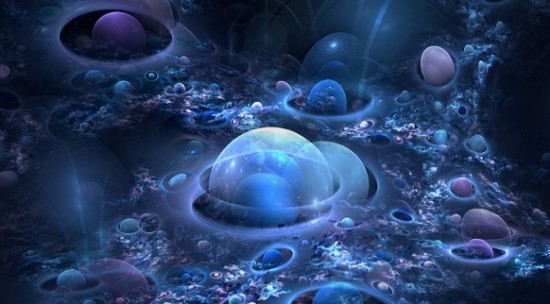As Curiosity and Perseverance roll over the Martian landscape in search of past evidence of surface water, organic molecules and microfossils, the question arises: would we recognize alien life if we were to stumble upon it?
Our own living references are those found here on Earth. What we have found in space in analyzing carbonaceous asteroids and comets, are organic molecules. These are necessary components for life to arise, but they are not life.
Here on Earth life arises from genetic materials, namely two complex organic molecules, ribonucleic acid (RNA) and deoxyribonucleic acid (DNA). Everything living here, whether anaerobic or aerobic contains these two.
Wait a minute – everything? Not so!
Some viruses only have RNA. These are called retroviruses which use the DNA of the cells they invade to reproduce. Examples of these include COVID-19, hepatitis, HIV and a number of viruses associated with cancers. One reason why retroviruses are more difficult to treat is that they borrow from other living things to replicate. Hence the many challenges faced by those developing vaccines or cures.
In defining life, not so long ago, viruses didn’t make the cut. First discovered in 1892, a heated debate among microbiologists argued both for and against including them with other forms of life. How could we define something living if the only way it reproduced involved borrowing from cells that were alive?
One commonality to life on Earth involves six essential chemical elements: carbon, nitrogen, hydrogen, oxygen, phosphorus and sulphur. Everything living contains them.
Life on Earth comes in four different families: archaea, bacteria, eukaryotes, and viruses. Archaea are the extremophiles that live in environments like the hot springs of Yellowstone National Park. Bacteria are single cells that come in two forms, those with and without chlorophyll. An example of the latter is yeast. Eukaryotes are living things with cells containing a nucleus. That includes animals, plants, algae and fungi. And the final group viruses we have already described.
In looking for life beyond Earth, can we assume that the elemental chemistry and the same biological groupings will exist in alien environments?
Charles Darwin described what is essential to the definition of something alive. Although he didn’t know about the mechanisms of genetics which Gregor Mendel discovered in following generational plantings of pea plants, Darwin said life could be defined by a biological system that had the ability to use materials around it to grow, replicate and develop characteristics advantageous to its survival in response to changing environmental dynamics. He called the latter of these characteristics, “natural selection.” He wasn’t the first to use the word “evolution” to define his theory. That crept into later editions of his “The Origin of the Species.”
So what if aliens exist who fit Darwin’s definition composed of different elements from those that constitute life on Earth? The reproductive mechanism that this type of life uses would likely not be DNA, but rather a complex molecule with similar characteristics. If Curiosity or Perseverance were to roll by such life or sample it, would it or we be able to determine this was a living alien?
In the search for life beyond Earth, intelligent or not, we need to ask what makes something alive or not. What is biological and what is not? NASA’s definition states the following:
“Living things tend to be complex and highly organized. They have the ability to take in energy from the environment and transform it for growth and reproduction. Organisms tend toward homeostasis, an equilibrium of parameters that define their internal environment. Living creatures respond, and their stimulation fosters a reaction-like motion, recoil, and in advanced forms, learning. Life is reproductive, as some kind of copying is needed for evolution to take hold through a population’s mutation and natural selection. To grow and develop, living creatures need foremost to be consumers, since growth includes changing biomass, creating new individuals, and the shedding of waste.”
We understand what is biological in the variable conditions we find here on Earth. On Mars, there is no place on the surface that is comparable. The environment of Antarctica is relatively benign when compared to the Red Planet. And the rovers, landers and orbiters we have sent only see Mars skin deep at best. To find life there, we must go underground and search for the equivalent of archaea here on Earth.
Elsewhere in our Solar System where life might exist presents significant challenges. The ice moons of Jupiter and Saturn could be a place to find Earthlike biology. Titan, Saturn’s largest moon, may have an entirely different elemental mix to create life using liquid methane as the medium instead of water. But right now, all of this is guesswork. And to find a different kind of life we will need to devise experiments to put on board landers that arrive at these Solar System destinations not limited to looking only for evidence of Earth biochemistry.
As for intelligent life existing among the tens of billions of galaxies, and quadrillion stars, planets and moons, to be alone in all that real estate, where we are the only intelligent observer, would be to borrow a phrase from the Jodie Foster movie “Contact,” an awful waste of space.
To find that intelligent life has the latest people in the SETI (Search for Extraterrestrial Intelligence) beginning to use artificial intelligence (AI) to scan the radio signals we gather from space. Will an AI be the first to detect intelligent aliens? That’s a subject for a future posting.










[…] few days ago I posted an essay on this site looking at our search for evidence of past or present life on Mars. I concluded the piece by talking about using artificial intelligence (AI) to scan radio signals to […]